The Camino de Santiago (St. James’s Way) is a pilgrimage ending in Santiago de Compostela, Spain. While there are numerous routes starting at various locations throughout Europe, the most common is the Camino Francés, which stretches nearly 500 miles from St.-Jean-Pied-de-Port, France to Santiago de Compostela, Spain.
This past fall I spent just under a month walking the Camino de Santiago (Camino Francés) across Spain. It was comforting to be back in the country where I had once lived for two years, so I was excited as ever for my journey.
Returning to Spain was extra refreshing, as I’d spent the previous year teaching English in South Korea — a challenging environment for non-Korean-speaking me, to say the least.
So to that end, the Camino was very much a joy as opposed to a struggle, a homecoming of sorts rather than a completely foreign land.
If you know about the Camino because of a film or book, chances are the Camino was romanticized, as it tends to be in those media. Many have this idea that it’s a guaranteed life-changing experience that will rock your world — a gift with a shiny bow on top.
I didn’t have this expectation, nor the result.
But while mine wasn’t a huge, instantaneous life-changing experience, I still took away nuggets of knowledge that I have applied to my life post-Camino. I’m sharing these lessons I learned, because you can probably apply them to your life too.
1. It feels good to wake up early and finish something by noon.
On an average day while walking the Camino, I’d be up by 6 o’clock and leaving to walk in the dark by 6:20. While I usually walked until 1–2 in the afternoon, by 12:00 I had always covered so much ground — literally.
Although the journey is meant to be enjoyed (and I absolutely love walking), my favorite part of the day was once you arrived at the albergue in the afternoon, where you’d spend the night.
You had the entire afternoon and evening to do as you pleased, because your walking was done. And I felt so refreshed and accomplished to have seen so much and walked so far during the last 6–7 hours.
While it was much easier to wake up that early in a new environment/routine where fellow pilgrims did the same, I took note of this fact in order to apply it to life back home.
Since returning home, where I transitioned to a freelance life and could wake up any hour I pleased, I set my alarm for 7:15 every day. I signed myself up for some fitness classes that started at 8, as extra pressure to get up and not hit snooze.
Have there been days I’ve slept in? You bet. But I always feel better on days when I finish my work by 4 p.m. than on days when I’m still chugging away at 6:30 p.m. because I had a late start.
Simply put: It feels good to wake up early and get something done.
2. If you’re not sure which way to go, choose one path and go.
My Camino guidebook had detailed maps, plus descriptions of what you’ll see as you enter and leave each town and city. (Sometimes navigating through cities was the hardest part!)
The entire path is also marked by yellow arrows, but the frequency at which you see the arrows is inconsistent. They also come in varied forms: spray-painted on walls, attached to posts, carved and painted into stone, and even pilgrim-made from small rocks arranged into arrow formations on the ground.
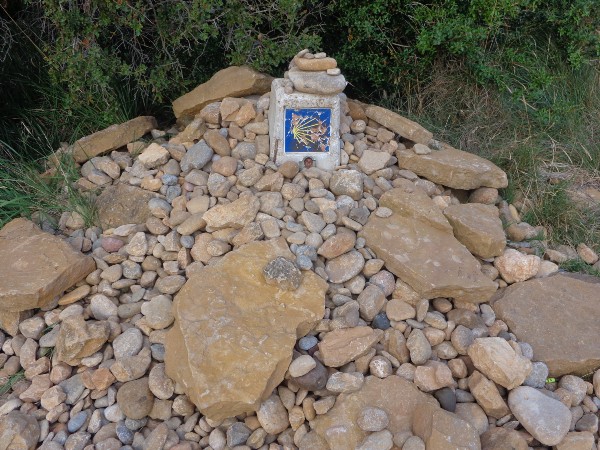
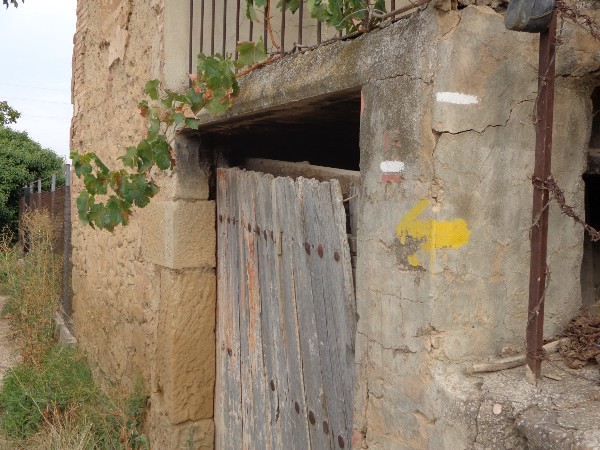
Yet there were still a few times when I came across parts of the walk and wasn’t sure which way to go.
In cities, I’d ask locals, but if I was stuck out in the boonies I’d usually see if my book had any tips, look around for clues, and use my flashlight if it was dark. But if these options failed, I never wanted to just stand around waiting for someone else to come along, to see if they knew. The closest person behind me could have been two minutes away or 20. And besides, there was no guarantee that this pilgrim would even know.
So my preferred method in this situation became to just pick a path and try it.
If you start to see some yellow arrows five minutes in, congrats — you chose correctly. But if the path is tiny and appears to be going through someone’s private property, doesn’t match the map, and then goes across a stream that you had to run and jump across in order to stay on the path, turn around and go back. This is the wrong path.
In life, you might not always know the best choice for you, but you won’t find out by staring at the options. Choose one and go with it. If it’s not the right path for you, you can always turn around and walk back.
A few years ago, a former coworker of mine applied, was offered and accepted a job in the Dean’s Office after having worked in a College’s department for several years. There was a pay raise and new responsibilities.
He left on good terms, a goodbye party was had, the department began the search for a replacement, and two weeks later he began his new job.
To his surprise, it wasn’t what he expected, and he didn’t enjoy the new type of work. Rather than sticking it out “just because,” or for fear of having to turn back, he did just that: He talked to his new boss, old boss, and went back to his old job. I think both starting the new job and returning to the previous took perhaps equal amounts of bravery.
Standing still prevents you from progressing. So keep moving. Don’t be afraid to try something; it’s not permanent, and you can always turn back and choose another path.
3. Simple is best. Less is more.
We’ve all heard this one before, and I knew it was true, but the Camino only further proved this to me.
On the Camino, I carried everything I had in my lil’ JanSport backpack from college. And that “everything” was quite small, because, well, I had to carry the weight on my shoulders every day during all my hours of walking.
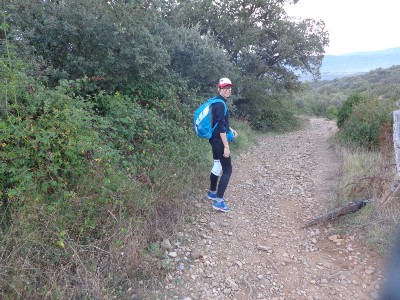
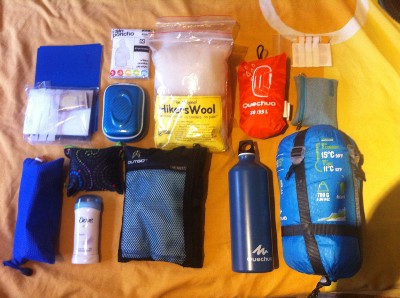
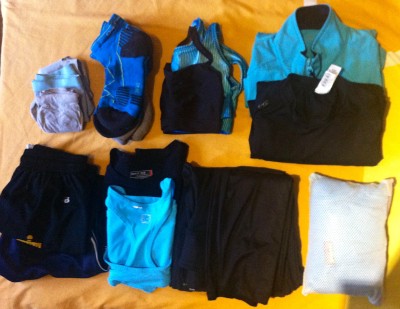
I only had my walking shoes and flip flops for footwear, and my outfits totaled two: one that I wore, and a clean one that I’d put on after my shower upon arrival at that day’s albergue.
Although I was in a new place every single day, I quickly fell into a simple routine: Wake up, walk, check in at albergue, shower, wash clothes, eat, chat, journal, sleep. Repeat.
It was the simplicity of my days, coupled with the low number of material possessions, that liberated my mind and heart to focus their energies on thoughts and feelings that deserved such energy.
Since returning home, I’ve been going through items I’ve had for years, donating what I don’t need. I’ve done this many times in the past, but I’m being even stricter with myself. I can thrive out of a backpack, and extra items really just weigh you down emotionally. Once you get rid of something, I promise you’ll forget about it so quickly it’s almost scary.
We can survive — thrive — on so few things.
I’ve also learned over time that when in doubt, get rid of the items. If something truly makes you happy, there would be no doubt. Taking pictures is another helpful tip if you’re parting with something of sentimental value. Finally, be aware of what new physical things you’re adding to your life.
There is so much more to be said on this topic, but the message is clear: Simple is best. Less is more. Start applying it to all areas in your life to see refreshing results.
4. Follow the yellow arrows.
As you’ve learned, the Camino is marked with yellow arrows to tell pilgrims which way to go.
Some yellow arrows had a more important purpose, directing you which way to turn when a path diverged, while others on straight paths miles-long were simply an affirmation that you were still going the right way.
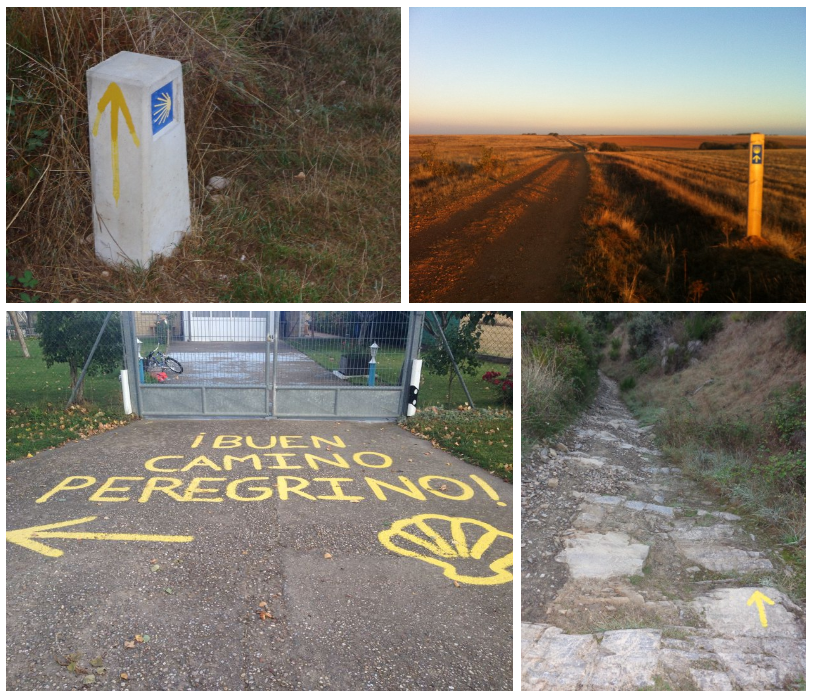
Look for the yellow arrows in your life. Look for signs affirming that you’re going the right way, and follow them.
What was the best part of your day? What makes you feel good? What brings you joy? That joy is a yellow arrow, and you need to follow it.
You’ll find that pursuing your passions will only bring more yellow arrows — reaffirmations that this is what you were meant to do; this is you. This is what you love, this is what makes you feel alive.
If you’re not seeing the arrows, take a different path.
5. Break things into small tasks.
Seven hundred and eighty kilometers sounds like a lot, doesn’t it? (That’s about 500 miles, by the way, as noted in the title—but I’m sticking with kilometers for the rest of this, as that’s how I tracked my walking each day.)
I always took the walk a day at a time. My average was around 28 kilometers a day. My highest was 40, and I only did that once. My lowest was 19.6 and it felt like I hadn’t gone anywhere that day!
Even within each day, I’d often break the walking down further, depending on my level of exhaustion, shoulder pain, heat, or just general wanting to be at my albergue already. (Basically when those levels were high, I’d break the walking into even smaller tasks to make it easier.)
The small towns I’d cross throughout the day were perfect little milestones. My guidebook also nicely split up the day’s kilometers into bite-sized chunks.
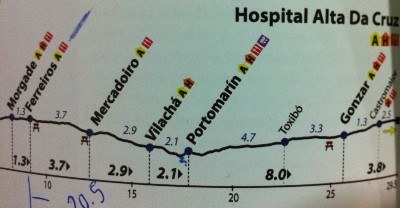
Just walk 3 kilometers. I’m just walking 3 kilometers — easy! I’d tell myself. And that gets you to the next tiny task.
Any accomplishment and success, or on the flip-side, any dreadful item on your to-do list is merely a product of many, many smaller tasks.
If you’re only ever looking at things as their whole (Walk the 500-mile Camino de Santiago, teach English for a year in South Korea, etc.) they may seem impossible and far out of reach. “File my federal taxes,” for example, could keep you from touching your W-2s for weeks.
So whatever the task that needs to get done, or the accomplishment you’d like to make, break it down into smaller tasks. Do just 10 minutes today. That’s how things get done.
6. Go your own pace. You don’t have to walk with other people.
After hopping on a bus in Madrid to go to the start of the Camino, an American-looking girl sat down next to me. She was from Tennessee, and was also setting out to walk the Camino.
We chatted on the bus ride, walked around Pamplona during our bus “layover,” and then navigated St.-Jean-Pied-de-Port together on foot upon arrival — where she ended up taking the last available bed at the same albergue where I’d booked ahead of time.
Since we’d spent the whole day together, it started to feel like I needed to account for my whereabouts to her — as if anything less would have been rude or seen as ill-spirited ditching.
“Heading out to wander the street, see you at dinner!” I said, leaving the 6-bed dorm room. Pilgrims we met that night at dinner thought she and I were friends who had come to walk the Camino together.
This all sort of panicked me; I’d come alone so I could do as I pleased. I didn’t want to be stuck, tied to walking with someone already! So the following morning, Day 1 of the Camino, I got ready super fast and said a quick goodbye and “Buen camino” before I stepped out into the dark alone.
Although I had this fear with a few others along the way, I quickly learned that I needn’t worry. It was totally acceptable to be walking and chatting with someone one minute, perhaps walk in silence for a bit, and then drift apart if your speeds are different.
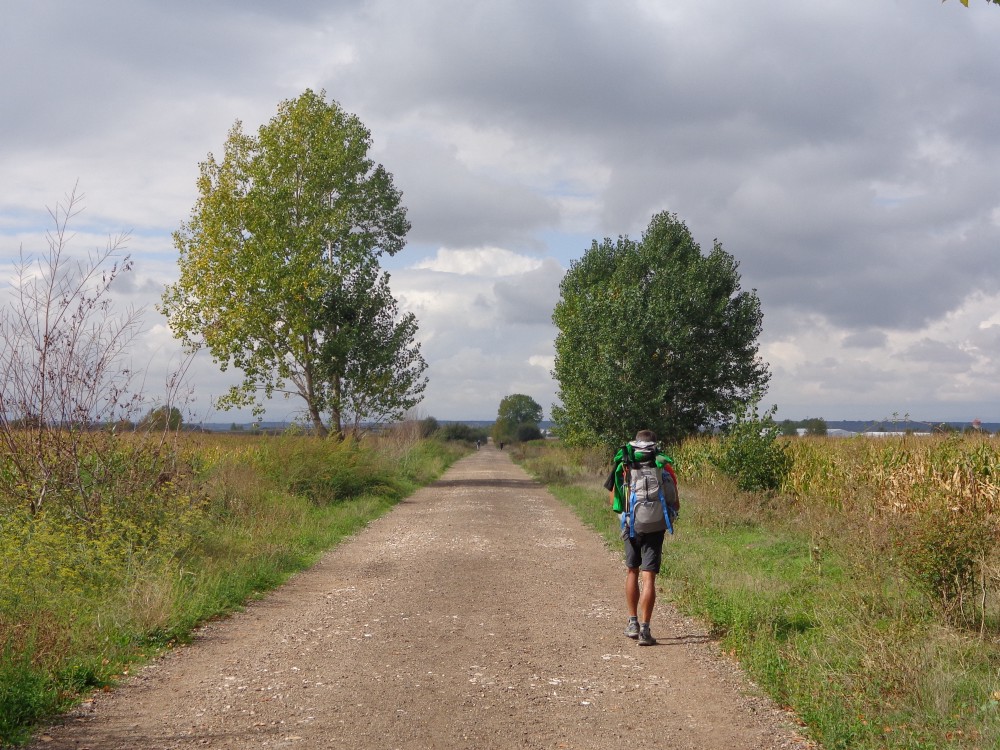
When you pass someone, you can just wish them a “Buen Camino” if you’re deep in thought and don’t really feel like talking with others. On the flip side, if you’re approaching someone who intrigues you for whatever reason, you can just as easily begin a conversation as you walk side by side.
The conversation will end when it ends, and you walk together until you’re walking alone. You’ll run into familiar faces again and again along the Camino, while other pilgrims you’ll see just once or twice.
My main takeaway here is that while I could walk at my own pace and choose who I spent my time with on the Camino, you can (and should) also do this every day in your life.
You are not other people, you are you. Live your life the way you want to live it, not the way that others expect you to.
If you don’t really get joy from hanging out with a certain longtime friend or old college roommate, stop spending time with them. Join Meetup and build new friendships. Surround yourself with people that inspire you and make you feel supported and loved.
You can apply this to even the smallest of decisions. For example, I’ve learned that my body needs ~9 hours of sleep a night. It just does. While many of my friends live on much less, they are not me. So I will gladly retire home earlier than others, and easily ignore any pleas to stay longer.
And I know it’s definitely not always easy to live life at your own pace, without being influenced by the desires of others. But you’ve got to go for it. Live your life, not someone else’s.
7. Take walks.
I love walking. When exploring a new place, I love to just walk around with no agenda. Walking also has this magical way of clearing your mind, letting your subconscious work through turmoil or draw connections while it’s processing events. So, walking was indeed one element that attracted me to the Camino in the first place.

But I’d never before walked for 6–8 hours a day. For a month straight. And while it sounds like a long time on paper, hours would somehow quickly pass without my notice. I’ll never forget the day when 4 hours passed in a snap. I was completely lost in thought and hadn’t talked to another soul; I was so shocked when I saw what time it was.
It was pretty incredible where my mind wandered to, as well. Along the walk, it unexpectedly dug up an old face I hadn’t seen or spoken to in nearly four years. Listening to such thoughts taught me that I needed closure with this person, even though if you had asked me earlier in the day about my friends and relationships, this person would have been the farthest from my mind.
So that’s the other part: You’ve got to listen. Letting your thoughts enter and run where they please is just one step; following them closely and paying attention will provide much greater personal benefits.
Going for a walk will often spark new ideas, too. I’m telling you: Your subconscious does the work for you, making connections between thoughts that had previously been stored in separate compartments. Stuck on a problem? Go for a walk. Don’t know what to write about next? Go for a walk. Getting angry at someone? Go for a walk.
Most Americans will have to develop the habit of taking walks, as our society — especially in suburbs — is so dependent on driving. I’ve been living in an American suburb of 12,000 for the past six months, and am lucky enough to live less than a mile from our town’s beautiful village center.
So while enrolled in exercise classes there during the fall and winter, I walked. Classmates were so surprised when they first found out. I even got complimented on this walking, as if it had been some great feat — and also received offers to be driven home.
Obviously I don’t think walking 0.7 miles should be treated as anything spectacular. So how can we incorporate walking into our lives? First, can you change your mode of transportation to do any sort of regular errand? (Is the school, your work, library, or grocery store within walking distance, for instance?)
If places are actually too far apart, go for a walk every morning or evening in your neighborhood. If you go with a friend or spouse, it’ll double as some quality time together, while going alone has its benefits too. Finally, if you have a 15-minute break at work, spend it going for a walk around the area. Similarly, you could use part of your daily lunch hour to go for a walk as well.
And remember, walking indoors is still walking — though I’ve deemed spending time outdoors so important that it’s the entire next section.
8. Appreciate nature.
Being outside every day on the Camino — moving — was all things wonderful. By crossing the country on foot, I was able to see various landscapes and wildlife up close and personal.
There were so many views I never wanted to leave; they sang glorious music to my inner being. I’d just look and look and look, trying to soak it all in while smiling from ear to ear, so the memory would last as long as possible.
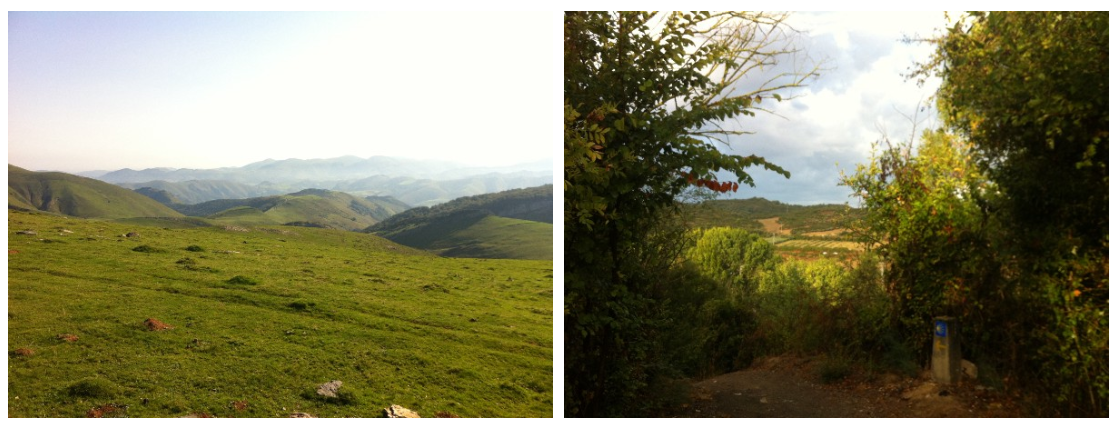
![]()
Since I started each morning walking in the dark, I got to see a gorgeous sunrise every day for an entire month. Seeing these sights and appreciating their beauty really makes you feel positively marvelous.
I don’t know what it is exactly, but there’s just something about the green and curves of rolling hills — or the bright teals and deep blues of seas — that’s completely wondrous to the human eye. And appreciating nature’s enchantment and grace does a body (and mind) good.
Aside from the landscapes, one memory that sticks out in my mind is that of the slugs. I saw so many slugs while walking the Camino: big, thick black slugs, some with “slime trails” yards long. I never see these creatures where I’m from, so I’d stop to admire them.
When they were plentiful on the trail, I’d be careful not to step on any. It was important to be reminded that we are cohabiting on this planet with a variety of creatures, and we humans need to treat them kindly — to share.
So, ask yourself: When was the last time you actually stopped to smell the roses? Admired a leaf? Touched a tree? Watched ants and marveled at their ability to carry items that are several times their own body weight?
You can easily put this one into action by noticing nature on those walks you’ll now be regularly taking. Additionally, is there a park, conservancy, river, or wooded area nearby that you can walk to? Why not plan a hike and picnic with friends this month?
Walking the Camino only reaffirmed that being out in nature appreciating the finer details of its plants, creatures, and landscapes is time well spent.
9. Help others.
By choosing to walk the Camino, you’re instantly a part of the pilgrim community: a very welcoming, helpful group. You share food, offer advice, and help whenever you can — even if your only common language is very broken French or gestures.
On my evening in Logroño, upon seeing me take off my knee brace a man let me use his muscle cream for legs. Then, he had me take a picture of his bottle so I could easily buy the same in a pharmacy.
Another example of this helpful community involved my ear plugs. Although they’d often fall out while I was sleeping, I somehow managed to always get them both back in my little plastic container every morning, which went straight into my little blue zippered pouch along with my toothbrush, toothpaste, and retainer.
Then one night, after getting up in the top bunk to sleep, my ear plugs were nowhere to be found. Proud of the fact that I never lose anything because all of my possessions always have a place (I’m like this at home, too), I start to wonder if I had actually left them behind somewhere. I accept the loss and go to sleep without ear plugs in.
Then, a day or two later, I run into a woman who had stayed in my dorm room a few nights ago. She immediately says to me, “Are you missing something small…?”
After a second my mind jumps to my missing ear plugs. But how the heck would she know? She couldn’t be talking about them, could she?
“My ear plugs…?” I ask with hesitation.
“I have them!” she says excitedly with a big grin on her face.
She had seen them on the floor (must have fallen off the top bunk) when she left that particular morning, and so she figured they must either belong to me or the woman who slept below me.
When I realize where we had been staying that night, it totally made sense that this happened. We had been in a tiny village whose town fiestas were taking place, meaning that music had blasted all night (and morning). I had hardly gotten any sleep, so I had been a complete zombie as I packed up that morning.
I was overjoyed to be reunited with my ear plugs, as I’d thought they were gone forever, but also in awe that this woman had taken the time to pick them up and carry them with her — just in case the off-chance arose that she run into me again.
Pilgrims help each other because they share the Camino in common. Taking a step back, we need to remind ourselves that all people of the world have something greatly in common — we’re all human beings. So let’s make an effort to be friendlier even if we think we have “nothing” in common, or aren’t yet aware of our similarities.
A simple way to do this is to smile more often; smile whenever you interact with someone else. Ask your cashier at the grocery store how he or she is doing. Use whatever skills or knowledge you have to help those a few steps behind you; show them how you got to where you are. Treat others with respect and compassion, without expecting that it be first “earned.”
At the end of the day, helping others creates positive feelings on both ends, as well as tangible effects that often grow exponentially.
10. Small changes can have big impacts.
Finally, I learned that usually it’s the small changes that produce large results.
There’s a woman who owns one of the albergues just outside of Logroño, and she’s known for helping people with their feet problems (aka blisters). By chance, I actually ended up staying at her albergue, and everything I read in the guidebook about this kind woman was true.
I didn’t have any blisters (thank you New Zealand hiking wool!), but I watched the Spanish woman help a few others.
“Your shoes are too loose,” she told a man. “That is why you have blisters.”
By tightening his shoes just a bit more, she demonstrated, the rubbing would stop.
 While I didn’t have problems with the tightness of my tennies, walking that many hours a day is still a lot of work for the feet. So once I was in flip flops at my albergue for the night, I’d usually sit down and rub my feet for a few minutes. At first I was amazed at how applying pressure to different places on my foot would cause my neck to crack, or other muscles/tendons in my shoulders and elsewhere to crackle and loosen up.
While I didn’t have problems with the tightness of my tennies, walking that many hours a day is still a lot of work for the feet. So once I was in flip flops at my albergue for the night, I’d usually sit down and rub my feet for a few minutes. At first I was amazed at how applying pressure to different places on my foot would cause my neck to crack, or other muscles/tendons in my shoulders and elsewhere to crackle and loosen up.
This is more an example of the interconnectedness of the human body, I’ll admit, which is too often forgotten or not realized by most. (This is also why you can stretch your hamstrings by rolling a tennis ball under your foot, by the way.) But I still categorized it as one small change (tightening shoes, massaging foot) having a big impact.
So applying this to life, it’s the things we do every day that matter more than what we do every once in a while. Those little daily actions add up to a huge sum over time.
Taking it one step further, of those little things you do every day, it’s a smaller amount that creates most of your current situation. So by focusing on that smaller amount in any area of your life, you’ll see the biggest change.
Perhaps you’re about to make some small changes based on lessons you’ve just read about in this very list.
And while they might not produce a big life-changing result immediately, reminding myself of these ideas I learned while walking the Camino — and then putting them into action — certainly has made me more fulfilled, relaxed, and grateful.
So here they are again, all together for easy carrying in your backpack as you continue on life’s journey:
It feels good to wake up early and finish something by noon.
If you’re not sure which way to go, choose one path and go.
Simple is best. Less is more.
Follow the yellow arrows.
Break things into small tasks.
Go your own pace. You don’t have to walk with other people.
Take walks.
Appreciate nature.
Help others.
Small changes can have big impacts.
Buen Camino!